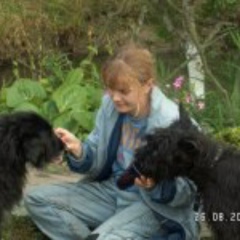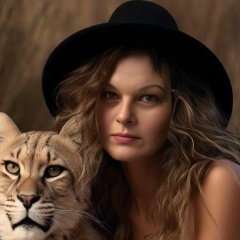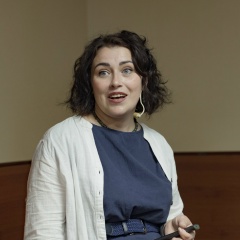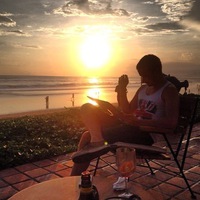Из ФБ:
"Раввин Мойше Хагерман был учителем в городе Олькуш, который находится к северо-западу от Кракова, и был сыном одного из раввинов города. Немцы взяли его из синагоги в середине утренней молитвы и привели его к городской площади, жестоко избивая, где уже лежали многие погибшие евреи города. Он чувствовал себя как перед смертью (на самом деле, он погиб в Майданек, примерно через 2 года), он попросил прочитать Кадиш (молитва рассматривается как дань уважения покойному) за погибших.
Эта фотография, как он стоит босиком, среди трупов расстрелянных евреев своей общины, и читает свою последнюю молитву, стала символом унижения евреев во время Холокоста, и она представлена в книгах, энциклопедиях и музеях.
Недавно, мне довелось показать эту фотографию кому-то. И вдруг, я понял:
Это не (только) символ унижения. Это и символ героизма. Вокруг него погибшие евреи его общины. Немцы, вокруг него стоят и смеются. Но он олицетворяет слова Зоара: «Я и Царь наедине». Только его тело унижается. Только его тело находится в изгнании. Но его душа находится в полной свободе.
Поэтому, когда смотрю на эту фотографию, я не вижу униженного еврея. Я вижу еврейского героя."
"Раввин Мойше Хагерман был учителем в городе Олькуш, который находится к северо-западу от Кракова, и был сыном одного из раввинов города. Немцы взяли его из синагоги в середине утренней молитвы и привели его к городской площади, жестоко избивая, где уже лежали многие погибшие евреи города. Он чувствовал себя как перед смертью (на самом деле, он погиб в Майданек, примерно через 2 года), он попросил прочитать Кадиш (молитва рассматривается как дань уважения покойному) за погибших.
Эта фотография, как он стоит босиком, среди трупов расстрелянных евреев своей общины, и читает свою последнюю молитву, стала символом унижения евреев во время Холокоста, и она представлена в книгах, энциклопедиях и музеях.
Недавно, мне довелось показать эту фотографию кому-то. И вдруг, я понял:
Это не (только) символ унижения. Это и символ героизма. Вокруг него погибшие евреи его общины. Немцы, вокруг него стоят и смеются. Но он олицетворяет слова Зоара: «Я и Царь наедине». Только его тело унижается. Только его тело находится в изгнании. Но его душа находится в полной свободе.
Поэтому, когда смотрю на эту фотографию, я не вижу униженного еврея. Я вижу еврейского героя."
From FB:
"Rabbi Moishe Hagerman was a teacher in the city of Olkusz, which is northwest of Krakow, and was the son of one of the city's rabbis. The Germans took him out of the synagogue in the middle of morning prayers and brought him to the town square, severely beating him, where many were already lying. perished Jews of the city He felt as though before his death (in fact, he died in Majdanek, about 2 years later), he asked to read the Kaddish (a prayer is seen as a tribute to the deceased) for the victims.
This photograph of him standing barefoot, among the corpses of the executed Jews of his community, and reading his last prayer, became a symbol of the humiliation of Jews during the Holocaust, and it is presented in books, encyclopedias and museums.
Recently, I happened to show this photo to someone. And suddenly, I realized:
It is not (only) a symbol of humiliation. It is also a symbol of heroism. Around him are the dead Jews of his community. The Germans stand around him and laugh. But he personifies the words of The Zohar: "I and the King are alone." Only his body is humiliated. Only his body is in exile. But his soul is in complete freedom.
Therefore, when I look at this photo, I do not see a humiliated Jew. I see a Jewish hero. "
"Rabbi Moishe Hagerman was a teacher in the city of Olkusz, which is northwest of Krakow, and was the son of one of the city's rabbis. The Germans took him out of the synagogue in the middle of morning prayers and brought him to the town square, severely beating him, where many were already lying. perished Jews of the city He felt as though before his death (in fact, he died in Majdanek, about 2 years later), he asked to read the Kaddish (a prayer is seen as a tribute to the deceased) for the victims.
This photograph of him standing barefoot, among the corpses of the executed Jews of his community, and reading his last prayer, became a symbol of the humiliation of Jews during the Holocaust, and it is presented in books, encyclopedias and museums.
Recently, I happened to show this photo to someone. And suddenly, I realized:
It is not (only) a symbol of humiliation. It is also a symbol of heroism. Around him are the dead Jews of his community. The Germans stand around him and laugh. But he personifies the words of The Zohar: "I and the King are alone." Only his body is humiliated. Only his body is in exile. But his soul is in complete freedom.
Therefore, when I look at this photo, I do not see a humiliated Jew. I see a Jewish hero. "

У записи 22 лайков,
1 репостов,
371 просмотров.
1 репостов,
371 просмотров.
Эту запись оставил(а) на своей стене Евгений Марон











































